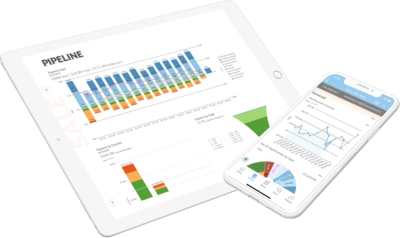Extract actionable insights faster with the Box connector
Enterprises of all sizes rely on Box for getting work done. The cloud storage service offers an enormous amount of flexibility and convenience, and it integrates with a wide variety of other business applications.
But what if you want to take that data stored in Box and use it for business intelligence (BI)? That’s where the Box connector comes in.
The Box connector allows you to quickly and easily pull data out of Box and into a BI tool for further analysis. And best of all, you don’t need to write any code!
With the Box connector, you can extract data faster and get more insights from your Box data than ever before. If your company uses Box, the connector is a must-have tool.
If you’ve never used a BI connector before, the concept of connecting Box to a BI tool may seem daunting. But with the Box connector, it’s a simple process for users of any skill level. In this article, we will break down the steps for you.

What is the Box connector and what does it do?
Box is a simple storage platform that many businesses use. With Box, you can create and share files, co-edit documents, e-sign contracts, classify information, and retain records.
And because it’s cloud-based, you can access your content from anywhere, on any device. Whether you’re working on a marketing campaign, collaborating on a project, or closing a deal, Box is the platform that will help you get it done.
When teams use Box, they often collect a variety of content types including images, videos, PDFs, and more. While this content is valuable on its own, it’s often even more valuable when analyzed as data.
This is where the Box connector comes in.
The Box connector is a tool that allows you to quickly and easily pull data out of Box and into a BI tool for further analysis. And best of all, you don’t need to write any code!
How does the Box connector work?
The Box connector works by connecting to your Box account and extracting the data you want to analyze.
The connector then formats the data into a format that can be read by a BI tool. Once the data has been pulled into the BI tool, you can use all of the features of the tool to analyze your data.
This includes things like creating charts, running queries, and more. The possibilities of what you can do with your data are endless!
What are the benefits of using the connector?
There are many benefits of using the Box connector, but here are a few of the most important ones:
1. Quick and easy data extraction
The Box connector makes it quick and easy to pull data out of Box and into a BI tool. But how does this benefit you?
BI tools function best when they have a lot of data to work with. The more data you have, the more insights you can glean from it.
The Box connector makes it easy to get all of the data stored in Box into your BI tool so that you can get the most out of your data. Plus, when you don’t have to manually export data from Box, you can spend more time analyzing it and less time on tedious tasks.
2. No coding required
One of the best things about the Box connector is that you don’t need to know how to code in order to use it.
The connector is designed to be used by non-technical users. This means that anyone in your organization can use it, regardless of their technical skills.
3. Flexible
The Box connector is a flexible tool that can be used in a variety of ways.
For example, you can use the connector to pull data out of Box and into a BI tool for further analysis. But you can also use the connector to export data from Box so that it can be used in other tools or systems.
This flexibility makes the connector a valuable tool for any business that uses Box.
4. Scalable
The Box connector helps your company scale by making it easy to use the data you are already storing in Box.
As your company grows, you will likely add more content to Box. And as you add more content, the value of being able to quickly and easily extract data from Box increases.
The Box connector is designed to be scalable so that it can grow with your company.

So, how can you start taking advantage of the Box connector?
1. Start with Box
The first step is to start using Box for your business. By creating an account with Box and uploading your data, you will be well on your way to being able to use the connector.
Once you have data in Box, you can then install the connector. The installation process is quick and easy, and once the connector is installed, you will be able to start extracting data from Box right away.
2. Get the connector
The next step is to get the Box connector. The connector can be found in the application or connector store that most BI tools offer. Simply find the Box connector in the store, and then install it.
3. Configure the connector
After you have installed the connector, you will need to configure it. The configuration process is quick and easy, and once it is complete, you will be able to start extracting data from Box.
You may need to provide some information about your Box account, such as your account name and password. But the process is typically straightforward, and you should be able to get the connector up and running in no time.
4. Start extracting data
Once the connector is installed and configured, you can start extracting data from Box. Simply select the data that you want to extract, and then choose the destination for the data.
5. Build reports and dashboards
Now that you have the data in your BI tool, you can start building reports and dashboards.
What kind of dashboards and reports you build will depend on your specific needs, but with the Box connector, you will have all of the data that you need to get started.
Simply connect the data in your Box account with your tool, and you can start developing the reports and dashboards that you need.
Practical Use Cases
What does the Box connector do in real business applications? Here are a few of the ways you can start using the Box connector out of the box to enhance your business processes:
1. Develop HR dashboards
The Box connector can be used to develop HR dashboards. Many HR teams collate data in Box, and the connector can be used to quickly and easily pull that data into a BI tool.
Once the data is in the BI tool, you can then start developing dashboards that track things like employee attrition, hiring trends, and more.
2. Analyze customer data
The Box connector can also be used to analyze customer data. If you have customer data stored in Box, you can use the connector to pull that data into a BI tool for further analysis.
This can be used to develop customer profiles, track customer sentiment, and more. With the right analysis, you can use the data to improve your customer service and increase customer satisfaction.
3. Improve marketing campaigns
The Box connector can be used to improve marketing campaigns. If your marketing team is using Box to store data, you can use the connector to pull that data into a BI tool.
This can be used to track marketing campaign performance, measure customer engagement, and more.
4. Get a 360-degree view of your business
The Box connector can be used to get a 360-degree view of your business. If you have data stored in multiple different systems, the connector can be used to pull that data into a BI tool.
Create dashboard tools that offer a unified view of your business, track KPIs, and more. Then, you can start making data-driven decisions that improve your bottom line.
Conclusion
The Box connector is a powerful tool that can be used to quickly and easily extract data from Box.
With the connector, you can pull data into a BI tool for further analysis, and you can start developing reports and dashboards that offer a unified view of your business. So, if you are looking for a way to get more out of your Box data with BI, the connector is a great option to consider.
Check out some related resources:

Sisense Alternatives & Competitors

Guide to Data Pipeline Design: Steps and Patterns






